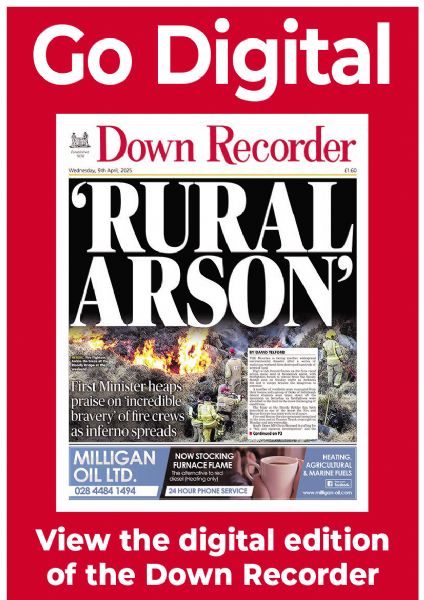New map preserves townlands
New map preserves townlands
18 January 2012 - by CIARA COLHOUN
LECALE’S many townlands tell very individual tales about local people, their history and their sense of place.
There are the large and well known Demesne of Down, Castleward and Hollymount, the unusually named Lisnamaul, Ringreagh and Carrowbaghran, and the bijou Islandbane, Ballyedock Lower and Crolly’s Quarter.
Their names are historic in their origins and often describe, in ancient dialect, the local landscape such as Clanmaghery, which comes from Clár machaire — a level plain — and Cloghy, which comes from Clocaigh — a rocky place.
This fascinating puzzle of local townlands is the subject of a new Lecale and Downe Townland Map produced by eminent local historian Dr. Brian Turner for the Lecale and Downe Historical Society in partnership with Friends of Down County Museum.
The map was launched on Monday evening in the museum by Mr. Turner, who also presented a lecture Bearing our Townlands in Mind.
The map, which is part of a larger poster, includes photographs of local townlands including portraits of two local characters, Elizabeth Taggart, who survived famine fever as an infant and was from Ballymote (Baile an Mhóta — townland of the moat) and William Johnston, from Ballykilbeg — townland of the little churches.
Below the map, Mr. Turner writes a fascinating essay on townlands, outlining the origins and meanings behind their names.
He explains how difficult this may be, with some townlands combining words that have origins in Gaelic with names introduced by the Anglo-Norman settlers of the 12th century.
Some of these townlands, Mr. Turner explains, have English names such as Walshestown and Bishop’s Court, Bonecastle and Hollymount.
Mr. Turner is passionate about the importance of townlands and their history to local communities and explains the cultural importance of the names of these tiny administrative units.
“Knowledge of our townlands is not only a matter of appreciating our past,” he says.
“They also provide the landscape of the present, and can help connect us to our ongoing heritage.
“By concentrating on the meanings of our unique Irish townlands, historical, administrative, and psychological, we can see our landscapes as spaces which give us life, rather than blankness to be crossed in getting somewhere else.
“All around us we have people who know their places as living localities with their own history and geography.
“They are teachers and farmers and naturalists, sailors, shopkeepers, scientists and schoolchildren and all of us who want to know where we are.”
Through his essay, Mr. Turner also encourages people to think about the significance of local townlands and their connection to local history.
“Inside the townlands are the results of our ancestors’ labour, and what we are doing in the present. Who made the fields? What are their size and shape? Are they bounded by hedges or walls? What are their names?”
“What is the difference between then and now? What’s the connection between then and now?”


